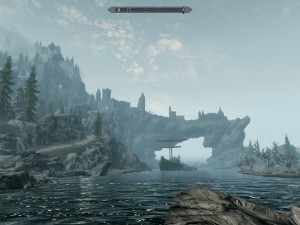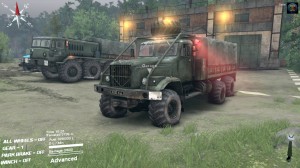The joy of exploration
During my ongoing literature review I often discover interesting facts about things I’ve never thought about. Sometimes I can connect these facts with my own observations: The result is mostly a completely new idea why things are as they are. Maybe these ideas are new to you, too. Therefore I’ll share my new science based knowledge with you!
This week: This time, I think about a certain game mechanic used in a recently released game: muddy and difficult terrain. Finally, exploring has really become a challenge and requires the players to interact directly with the game world in order to discover new regions.
This article is mostly based on my very own observations and experiences. However, it still can be seen as some kind of guideline to implement the feature of exploration in a virtual game world.
Hiking through forests and mountainous regions is one of my hobbies. Reaching the top of a mountain and enjoying a beautiful view over the landscape after making my way through the timbered slopes is a great experience. Moreover, it can also become a little adventure under certain circumstances. A tree could have fallen down after a storm and is blocking the way or the way itself could be quite muddy after a rainy period. These and other obstacles can increase the joy of hiking, because they can wake the inner explorer up, who wants to find a new path.
The desire to explore does not only affect the way how I do enjoy hiking: it is also affected my computer game playstyle. In this case, I am mostly enjoying open-world games, where I am allowed to explore a huge virtual world on my own. It is interesting to find my own way through different regions and to climb up on tall mountains.
One of those games is the role-playing game Skyrim[1]. It is completely up to the players, where they want to go and which regions they want to explore. Additionally, the virtual landscape of Skyrim is rewarding an explorative playstyle with beautiful views, sceneries and sometimes hidden dungeons. The only disadvantage is, that it is rarely really challenging to explore the game world. In contrast to hiking in the real world, the player can ignore the underground and does not need to circumvent deep mud or find a way to climb over a tree. Those obstacles do have only decorative purposes.
The strange thing is, that I have not noticed the lack of those obstacles until I started playing Spintires[2], a recently released driving simulation game. In Spintires, the players can take control over several off-road vehicle. The game is not really an open-world game and has only one main goal to complete a map: deliver a certain amount of logs. However, this is not really a problem, because most of the joy comes from the fact that the terrain is really influencing the progress of the players. Rivers can be too deep and it is impossible to cross them. Additionally, the underground can be really muddy and the trucks can get stuck. Moreover, some parts of the levels are cloaked and are not shown on the map until the players reach a particular point in the world to reveal this region. This game mechanic challenges the players and encourages them to explore the virtual world to discover shortcuts and easier paths.
As a real world hiker, this complex virtual terrain has really increased my entertainment in exploring game worlds. It is suddenly important to think about the right path in order to proceed on. Furthermore, the game provides me with tools to deal with the difficult terrain: I am able to activate all wheel drive, differential lock or to use a winch. All in all, exploring is finally requiring me to deal with the terrain and not just to look out for hidden places.
After playing Spintires, I really like to have more games like this. It adds an additional realistic feeling to the game and it allows me to interact directly with the game world. Finally, exploring the game world has not only to be finding hidden places–now, it is also about finding a good way to move through the terrain and to deal with the environment.

